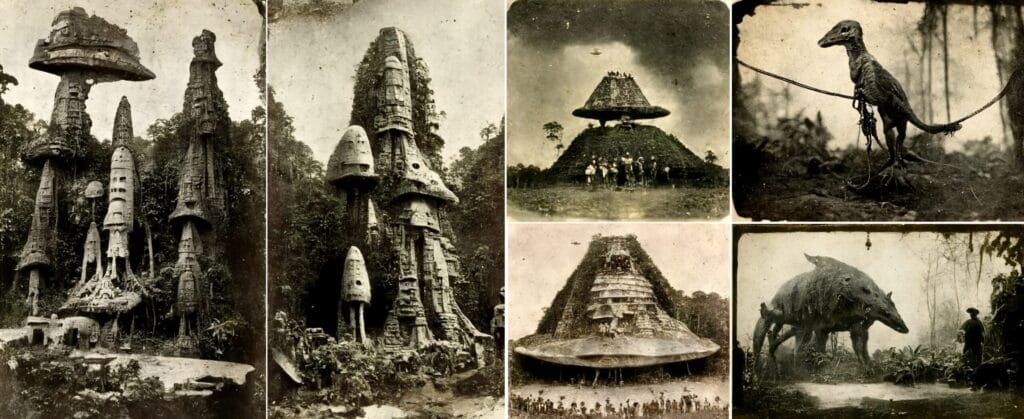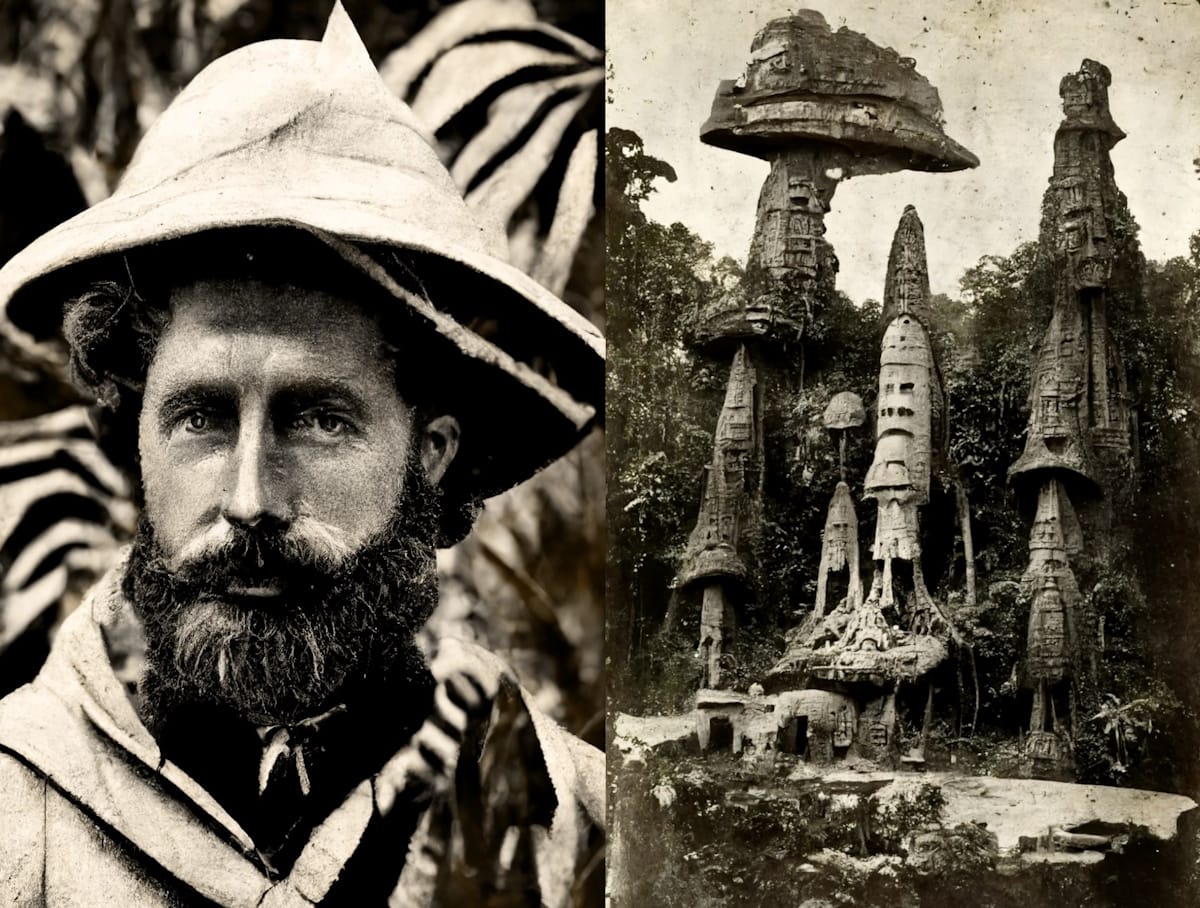Social media users are spreading the story of a British traveler who disappeared during an expedition to exotic countries, but left behind several mysterious photographs. We have verified the accuracy of such posts.
As stated in viral publications, Briton Alfred Isaac Middleton devoted his life to traveling through the Amazon, Africa and Asia, trying to find the “heir of Atlantis” - the city of Doulita. At the turn of the 19th and 20th centuries, he and like-minded people went to the Amazon (according to another version, to Sumatra), where he was captured, and no one saw Middleton again. The posts say: “At the end of the 19th century, the traveler’s manuscripts were purchased by a private collector, and were lost during the Second World War. All that remains from one of the most ambitious researchers is a pile of photographs depicting very strange objects: inexplicable structures, representatives of unknown tribes and unusual animals. The landscapes in the photographs seem so fantastic that all attempts by academic scientists to establish the location of the shooting were unsuccessful. Later, due to their own impotence, they were declared a production.”
Publications containing several of these photographs, as well as a portrait of Middleton himself, were widely circulated in Facebook (one of the entries received more than 1100 reposts), "Odnoklassniki", "VKontakte", "Zene", Telegram, TikTok, Rutube, TenChat and on some other resources.

In open sources, apart from publications about the mysterious history, a British traveler named Alfred Isaac Middleton is not mentioned. In particular, the English-language "Wikipedia"contains several dozen articles about bearers of the same surname, but Alfred Isaac is not among them. The person closest in terms of activity to the hero of the viral posts is John Henry Middleton, archaeologist of the second half of the 19th century and director of the Museum of Art and Antiquities at the University of Cambridge. During his life, he managed to visit North and South America, Africa and Asia, but never disappeared anywhere and died at the age of 49 from a morphine overdose. If there is any external resemblance between namesakes, it is insignificant.

Alfred Middleton looks a little more like Percy Fossetta - British traveler beginning of the 20th century.

And it's not just about appearance. Fossett is known for his expeditions to the Amazon, where he searched for the so-called Lost City of Z, a monument to an ancient civilization believed to be located in the jungles of the Brazilian state of Mato Grosso. During one of his expeditions, Fossett went missing. The thoughts he expressed in a conversation with the writer Arthur Conan Doyle about huge ancient animals that could roam the jungles of South America formed the basis of basis novel "The Lost World". Apparently, similar animals are captured in some of the mysterious photographs. Fossett himself was inspired by the manuscript known as "Manuscript 512" This text, discovered in Brazil in the 19th century, describes a settlement in the spirit of the same Doulithu from the viral posts.
However, the toponym Dawleetoo is not found in authoritative sources. In the project "Google Books“It appears in only two publications on the topic of alternative history, with one published in 2023, the other in 2024. In some posts on social networks approvedthat information about the mysterious city in the Brazilian jungle was taken from the book “The Lost Box of Doulitu” - the authors even cite link on it on the Amazon website. This link leads to a page from the book "The Lost Box", written in 1881 by a certain Fortune du Boisgobe. The full text is freely available on the website Archive.org and does not contain any mention of the city of Doulitou (which is not surprising, since “The Lost Box” is an ordinary French detective story of the late 19th century).
For the first time, a brief summary of the story of Middleton's adventures, along with 36 photographs. appeared July 28, 2022 on Facebook in the AI Art Universe group. As the name suggests, this large (600,000 subscribers) community is dedicated to images and videos created using artificial intelligence. A post about Middleton was posted by computer graphics specialist Mitch Gates. The next day he published a similar recording already on your personal page, accompanied by the hashtag #midjourneyai (Midjourney is a popular service for creating images using a text description). And a few days later, when the story of the fictional British traveler went viral, Gates complainedthat in publications they forget to indicate the name of its author. But it was too late - the pictures, without mentioning the source, were distributed all over the world and in many cases managed to acquire details.
In addition to a number of visual artifacts characteristic of AI and not manually processed after generation, the author also left Easter eggs indicating the origin of the photographs. Thus, Middleton’s initials in the title of the original publication (A. I.) coincide with the English abbreviation for artificial intelligence. And the name of the mysterious city is Dawleetoo deciphered one of the readers of the post in AI Art Universe: it is in tune with DALL-E 2, an improved version of another neural networks to convert text to image. However, as the author himself noted in the comments, in this case he used only Midjourney.
Thus, a series of photographs allegedly taken by Alfred Middleton during expeditions were generated by artificial intelligence, and the history of the origin of the images and the biography of the British explorer were fictitious.
Cover photo: social networks
Read on topic:
If you find a spelling or grammatical error, please let us know by highlighting the error text and clicking Ctrl+Enter.






